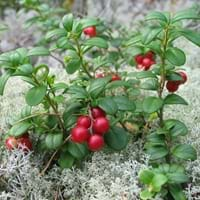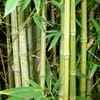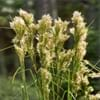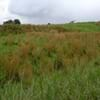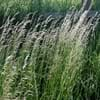Life Span
Perennial
Perennial
Type
Grass
Broadleaf Evergreen
Origin
China, Japan
Northeastern United States, North-Central United States, Canada, Northern Europe, Russia/Siberia, Japan
Types
Greenstripe Vivax, Moso, Weavers Bamboo, Oldhamii
V. vitis-idaea var. vitis-idaea, V. vitis-idaea var. minus Lodd
Habitat
Warmer regions
Mountain tops, Rocky areas
USDA Hardiness Zone
6-9
2-6
AHS Heat Zone
Not Available
Not Available
Sunset Zone
Not Available
21,22
Habit
Clump-Forming
Prostrate/Trailing
Minimum Width
Not Available
Flower Color
Not Available
White, Pink, Light Pink
Flower Color Modifier
Not Available
Bicolor
Fruit Color
Green, Pink, Red
Red
Leaf Color in Spring
Dark Green
Green, Dark Green
Leaf Color in Summer
Dark Green
Dark Green
Leaf Color in Fall
Dark Green
Dark Green
Leaf Color in Winter
Dark Green
Dark Green
Leaf Shape
Long Linear
Round
Plant Season
Not Available
Spring, Summer, Fall, Winter
Sunlight
Full Sun, Partial Sun, Partial shade
Full Sun, Partial Sun, Partial shade
Growth Rate
Very Fast
Fast
Type of Soil
Loam
Loam, Sand
The pH of Soil
Acidic, Neutral, Alkaline
Acidic
Soil Drainage
Average
Well drained
Bloom Time
Not Available
Late Spring, Early Summer
Tolerances
Wet Site, Drought
Not Available
Where to Plant?
Container, Ground
Ground, Pot
How to Plant?
Grafting, Seedlings, Stem Planting, Transplanting
Seedlings
Plant Maintenance
Medium
Medium
Watering Requirements
Needs watering once a week, Use Mulches to help prevent water loss during hot and windy weather, Water Deeply
Requires regular watering, when new, water every week
In Summer
Lots of watering
Lots of watering
In Spring
Moderate
Moderate
In Winter
Average Water
Average Water
Soil pH
Acidic, Neutral, Alkaline
Acidic
Soil Type
Loam
Loam, Sand
Soil Drainage Capacity
Average
Well drained
Sun Exposure
Full Sun, Partial Sun, Partial shade
Full Sun, Partial Sun, Partial shade
Pruning
Do not prune during shooting season, Prune in late summer or fall, Remove damaged leaves
No pruning needed in the early stages
Fertilizers
All-Purpose Liquid Fertilizer
for fruiting plants, use high phosphorous content fertilizer, since leafy plants, use higher nitrogen content fertilizer
Pests and Diseases
Black sooty mold, Mealybugs, Mosaic viruses, Powdery mildew, pythogens, Stem rot
Red blotch
Plant Tolerance
Drought
Not Available
Flower Petal Number
Not Available
Single
Foliage Texture
Coarse
Fine
Foliage Sheen
Matte
Glossy
Attracts
Not Available
Birds
Allergy
Cyanide poisoning
Nausea, Vomiting
Aesthetic Uses
Showy Purposes
Showy Purposes
Beauty Benefits
Not Available
Not Available
Environmental Uses
Air purification
Food for birds
Medicinal Uses
Clears heat, Cold, fidgeting, Treating fever, Urinary tract problems
Arthritis, Gout, Kidney problems, Urinary tract problems
Part of Plant Used
Leaves, Stem
Fruits
Other Uses
Application in Handicrafts, Showy Purposes, Used As Food, Used in Furniture, Used in paper industry
Used As Food, Used in making beverages
Used As Indoor Plant
Yes
No
Used As Outdoor Plant
Yes
Yes
Garden Design
Hedges, Mixed Border
Alpine, Bog Garden, Container, Edging, Edible, Foundation, Groundcover, Rock Garden, Wall, Wildflower
Botanical Name
BAMBUSA
VACCINIUM vitis-idaea
Common Name
Bamboo, Clumping Bamboo
Lingonberry
In Hindi
Bānsa
Lingonberry
In German
Bambus
Preiselbeere
In Spanish
Bambú
Lingonberry
In Greek
μπαμπού
Lingonberry
In Portuguese
bambu
Lingonberry
In Polish
Bambus
borówki brusznicy
In Latin
Bamboo
Lingonberry
Phylum
Magnoliophyta
Tracheophyta
Class
Liliopsida
Magnoliopsida
Genus
Acidosasa
Vaccinium
Clade
Not Available
Angiosperms, Asterids, Eudicots
Tribe
Bambuseae
Not Available
Subfamily
Arthrostylidiinae, Arundinariinae, Bambusinae, Chusqueinae, Guaduinae, Melocanninae, Nastinae, Racemobambodinae, Shibataeinae
Not Available
Number of Species
Not Available
Importance of Bamboo and Lingonberry
Want to have the most appropriate plant for your garden? You might want to know the importance of Bamboo and Lingonberry. Basically, these two plants vary in many aspects. Compare Bamboo and Lingonberry as they differ in many characteristics such as their life, care, benefits, facts, etc. Every gardener must at least have the slightest clue about the plants he wants to plant in his garden. Compare their benefits, which differ in many ways like facts and uses. The medicinal use of Bamboo is Clears heat, Cold, fidgeting, Treating fever and Urinary tract problems whereas of Lingonberry is Arthritis, Gout, Kidney problems and Urinary tract problems. Bamboo has beauty benefits as follows: Not Available while Lingonberry has beauty benefits as follows: Not Available.
Compare Facts of Bamboo vs Lingonberry
How to choose the best garden plant for your garden depending upon its facts? Here garden plant comparison will help you to solve this query. Compare the facts of Bamboo vs Lingonberry and know which one to choose. As garden plants have benefits and other uses, allergy is also a major drawback of plants for some people. Allergic reactions of Bamboo are Cyanide poisoning whereas of Lingonberry have Nausea and Vomiting respectively. Having a fruit bearing plant in your garden can be a plus point of your garden. Bamboo has no showy fruits and Lingonberry has showy fruits. Also Bamboo is not flowering and Lingonberry is not flowering . You can compare Bamboo and Lingonberry facts and facts of other plants too.

